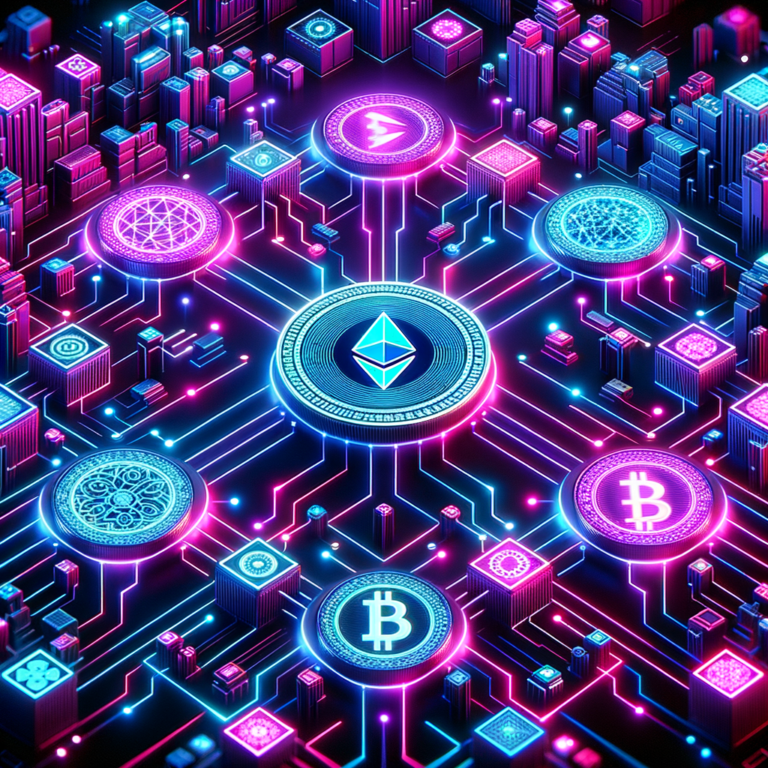Deciphering DeFi: An Introduction to Decentralized Finance
Decentralized Finance, commonly known as DeFi, is a transformative wave sweeping across the financial sector, redefining traditional banking, lending, and trading systems through blockchain technology. This emerging field aims to democratize finance by eliminating intermediaries such as banks and financial institutions, facilitating peer-to-peer financial transactions. In this article, we delve into what DeFi is, explore its core components, discuss its impact on the financial landscape, and weigh the potential risks and rewards associated with DeFi investments.

Understanding the Basics of DeFi
Decentralized Finance (DeFi) is an umbrella term for various financial applications in cryptocurrency or blockchain geared toward disrupting financial intermediaries. DeFi is built on secure distributed ledgers similar to those used by cryptocurrency, which ensures that transactions are secure, transparent, and immutable. This means that DeFi platforms operate without a central authority, and instead, use smart contracts on blockchains, primarily Ethereum, to manage transactions and enforce terms automatically.
At the core of DeFi is the principle of decentralization, which aims to distribute power away from central authorities and towards the individual participants in the network. This shift not only enhances transaction security and transparency, but also significantly reduces the costs and time involved in processes traditionally managed by banks or other financial entities. DeFi applications offer services ranging from borrowing and lending platforms to complex financial instruments like derivatives and insurance, all accessible to anyone with an internet connection.
The innovation doesn’t stop at just mimicking existing financial products in a decentralized environment. It extends to creating entirely new frameworks that foster inclusivity and open access. Through DeFi, users can maintain full control over their assets without needing approval from a governing body, which can be particularly beneficial for people in unbanked or underbanked regions of the world.
The Key Components of Decentralized Finance
One of the foundational components of DeFi is the blockchain technology that underpins it, mainly Ethereum. Ethereum’s programmable smart contract capability allows developers to create a wide range of applications directly on the blockchain, from simple token swaps to automated loans and complex decentralized autonomous organizations (DAOs). These smart contracts execute automatically based on the coded conditions, reducing the need for manual processing and the risk of human error.
Another critical aspect of DeFi is the use of stablecoins, which are cryptocurrencies designed to maintain a stable value relative to a specific asset, typically a fiat currency like the US dollar. Stablecoins are crucial in DeFi to mitigate the volatility commonly associated with cryptocurrencies, making them more suitable for everyday transactions and financial contracts. Liquidity pools are also paramount in DeFi, providing the necessary liquidity for decentralized exchanges and other financial applications by pooling assets from multiple investors who in return earn transaction fees based on their share in the pool.
Finally, decentralized exchanges (DEXs) are a vital component of DeFi, allowing users to trade cryptocurrencies without the need for a centralized authority to oversee the fairness of trades. DEXs not only reduce the risk of theft from hacking attacks on central exchanges but also provide privacy and reduce trading costs. These components work in synergy to provide a comprehensive ecosystem that supports a wide array of financial activities without centralized control.
How DeFi is Changing the Financial Landscape
DeFi is significantly altering the financial landscape by providing more accessible, efficient, and equitable financial services. Traditional financial systems often come with high transaction fees, slow processing times, and accessibility issues, which DeFi addresses by leveraging blockchain technology. For instance, DeTi makes it possible for anyone with an internet connection to access financial services such as loans or insurance without the need for a bank account or credit history, potentially reducing global financial inequality.
Moreover, DeFi introduces improved transparency and security. Since all transactions are recorded on a blockchain, they are immutable and independently verifiable. This not only reduces the likelihood of fraud and corruption but also gives users confidence in the fairness and integrity of financial processes. Furthermore, by automating transactions through smart contracts, DeFi minimizes the risks associated with human intervention and bias, fostering a more trustworthy financial environment.
DeFi also fosters innovation in financial products and services. The open-source nature of most DeFi projects encourages continuous improvements and innovations, leading to the development of new financial tools and services that can adapt more quickly to consumer needs and changes in the market. This dynamic environment encourages a culture of innovation that keeps pushing the boundaries of what is possible in finance.
Potential Risks and Rewards of DeFi Investments
Investing in DeFi comes with its set of potential risks and rewards. On the reward side, DeFi offers high-interest rates compared to traditional banks, especially evident in yield farming where users can earn returns through lending out their cryptocurrencies. Additionally, the decentralized nature of DeFi platforms offers investors opportunities to engage in markets and services traditionally reserved for banks or large institutions, democratizing financial opportunities.
However, the risks in DeFi cannot be understated. One of the primary concerns is the lack of regulation, which, while allowing for innovation, also means that there is minimal recourse for users in the event of fraud or failure. The technology itself, while secure, is still relatively new and can be prone to bugs or errors in smart contract code, potentially leading to significant losses. Furthermore, the high volatility of cryptocurrencies, the backbone of DeFi, can lead to substantial financial risk for unwary investors.
Moreover, the anonymity provided by blockchain can be a double-edged sword, potentially facilitating money laundering and other illicit activities if not properly managed. Therefore, while DeFi offers significant growth potential, it is essential for investors to conduct thorough research and consider risk mitigation strategies before committing capital to this nascent industry.
Decentralized Finance stands at the cutting edge of financial innovation, offering a range of services that challenge traditional financial institutions’ hegemony. By providing a decentralized, transparent, and inclusive platform, DeFi has the potential to redefine the economic fabric of society. However, like any emerging technology, it carries risks that must be carefully managed. As we continue to explore the possibilities within DeFi, it remains crucial for potential investors and participants to stay informed and cautious, balancing the allure of high returns against the potential for significant risks.






